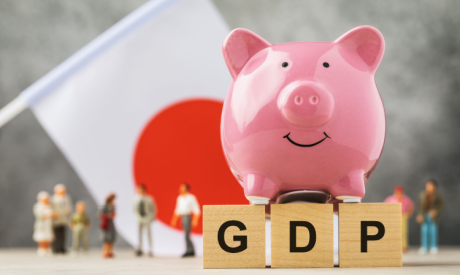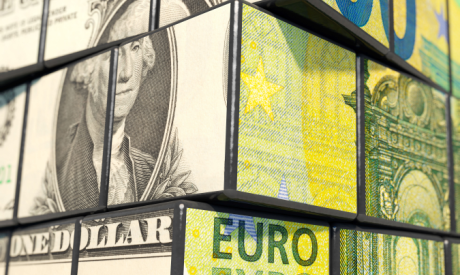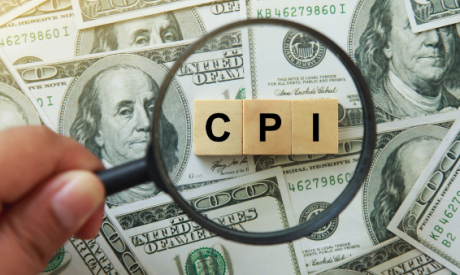Week in review
The USD/JPY opened the week at 144.95. It recovered to above 145 and gradually moved higher as dollar buying dominated from the morning of 11 December in the Tokyo session. The USD/JPY shot past 146 after European traders entered the market due to media reports that the BOJ saw no need to rush to end the negative interest rate policy this month. The pair rose to a high of 146.58, but upside was tempered at this level due in part to a decline in UST yields, and the USD/JPY fell moderately on 12 December, briefly breaking below 145. However, the pair rebounded to just below 146 after the US CPI for November showed accelerated growth in the supercore index, which measures services excluding housing costs. The USD/JPY traded in the upper 145 range after that as the market waited on the FOMC meeting. At the closely watched meeting, the Fed left its policy rate unchanged, but downgraded its assessment of the economy and prices in the statement. It also lowered the forecast for the core PCE deflator in the summary of economic projections announced at the same time, and the dot plot implied a 75bp rate cut next year. The dollar weakened across the board as a result. Chair Jay Powell's subsequent press conference struck a notably dovish tone, with Powell acknowledging that the Fed had discussed lowering interest rates. This caused the dollar to weaken further, with the USD/JPY plummeting to the 142 level. Dollar selling continued through the Tokyo session on 14 December, and the USD/JPY temporarily fell to 140.95. The decline halted there, and the pair traded in a flat range centered above 141.50. At the time of writing this report on 15 December, the USD/JPY had risen to about 142.50 through to the time of the fixing rate announcement, with dollar buying and yen selling somewhat dominant in the morning (Figure 1).
This week, the dollar weakened across the board following the FOMC meeting. Meanwhile, ECB President Christine Lagarde curbed expectations of a rate cut at the ECB meeting, which was held the day after the FOMC. This buoyed the euro and Northern European currencies strengthened across the board (Figure 2).
FIGURE 1: USD/JPY

Note: Through 11:00am JST on 15 December
Source: EBS, Refinitiv, MUFG
FIGURE 2: MAJOR CURRENCIES' RATE OF CHANGE VS USD THIS WEEK

Note: Through 11:00am JST on 15 December
Source: Bloomberg, MUFG
Chair Jay Powell confirms Fed is considering rate cuts
The last FOMC meeting for the year ended up being a dovish surprise. In last week's report, we forecast that the Fed would keep its policy rate on hold and that it could lower its inflation outlook and fed funds rate forecasts. However, we had expected Powell to maintain a hawkish stance at his press conference, but instead he said the Fed is "aware of the risk that we would hang on too long," effectively retreating from his previous position that the Fed would hike rates higher and for longer. He also acknowledged that the FOMC had discussed the prospect of reducing rates. Fed Governor Christopher Waller had touched on the possibility of a rate cut just before the blackout period, and it appears that this was actually put on the table. However, the dovish shift is somewhat puzzling considering the strength of recent US economic data. This has raised suspicions that the Fed might know something that the market does not, and long-term UST yields fell below 4.00% with the dollar weakened across the board. We expect the situation to remain as is going into the Christmas break next week.
Sense of caution ahead of BOJ policy meeting
Meanwhile, the BOJ's monetary policy meeting is scheduled for 18-19 December. Some market participants appear to have factored in a policy shift at the meeting due to last week's comments by Governor Kazuo Ueda and Deputy Governor Ryozo Himino pointing to the normalization of monetary policy. The yen weakened briefly on 11 December after foreign media outlets reported that BOJ officials said the Bank saw no need to rush to change policy this month. However, the improvement in corporate sentiment and heightened sense of labor shortages revealed in the BOJ Tankan announced on 13 December and the increased possibility that the Fed will cut rates at an early date has led to simmering concerns that the BOJ could make some kind of move at next week's meeting. We recall that BOJ Governor Haruhiko Kuroda caught the market off guard at last December's meeting by announcing a revision to the YCC framework (increasing the permissible range of fluctuations in long-term yields). We still think the BOJ will stay its hand this time and move to a policy change at the meeting in January, but the Bank might do something to further lay the groundwork for a policy shift given that an early change in policy has been factored in to some extent. For example, it might remove guidance in the statement on monetary policy that says "the Bank will not hesitate to take additional easing measures if necessary." This could spark a further strengthening of the yen, although possibly not to the extent of the reaction following last year's surprise. Naturally, we should also remain alert for the opposite pattern playing out. If the meeting comes off as dovish, we expect the yen to react by weakening more than it did following the report in foreign media on 11 December. In addition, as usual, we should be on the alert for media reports ahead of the meeting.
Decline in liquidity due to fewer market participants
After the FOMC meeting, long-term UST yields fell below 4.00%, the dollar weakened across the board, and the USD/JPY temporarily fell below 141 for the first time since August. The USD/JPY has fluctuated considerably over the last two weeks, and we see the possibility of even greater movement next week due to a decline in liquidity as market participants break for Christmas. Note that the USD/JPY is likely to fluctuate in both directions, regardless of the outcome of the BOJ's policy meeting. It is worth remembering that the large 7 yen decline in a single day in reaction to last year's BOJ meeting was partly due to this environment.
Forecast range
USD/JPY: 139.00 - 145.00



